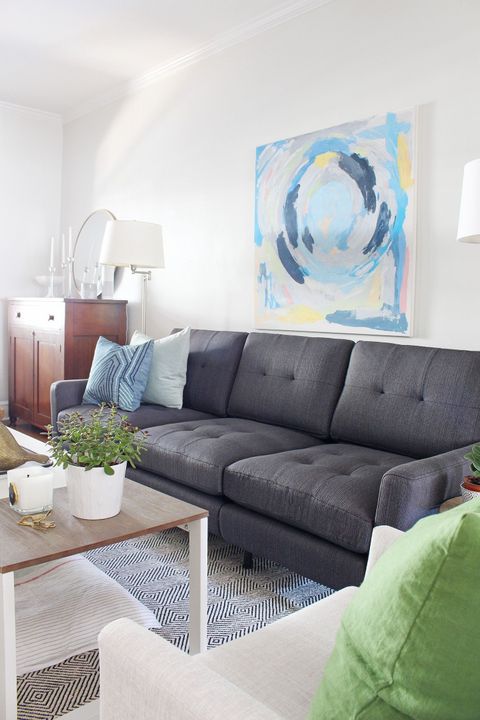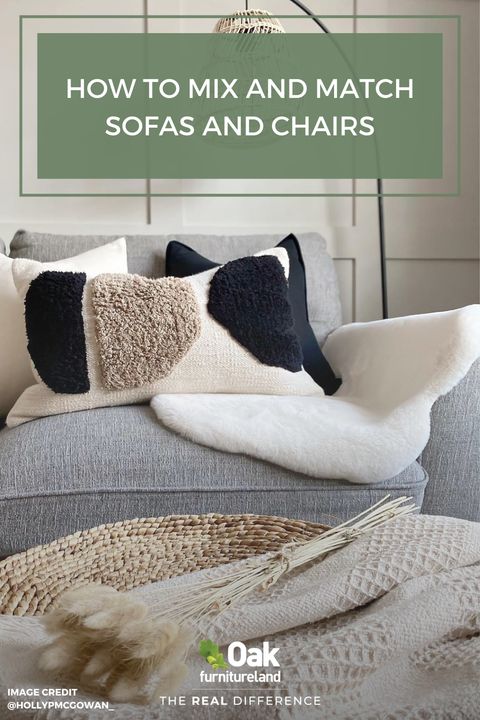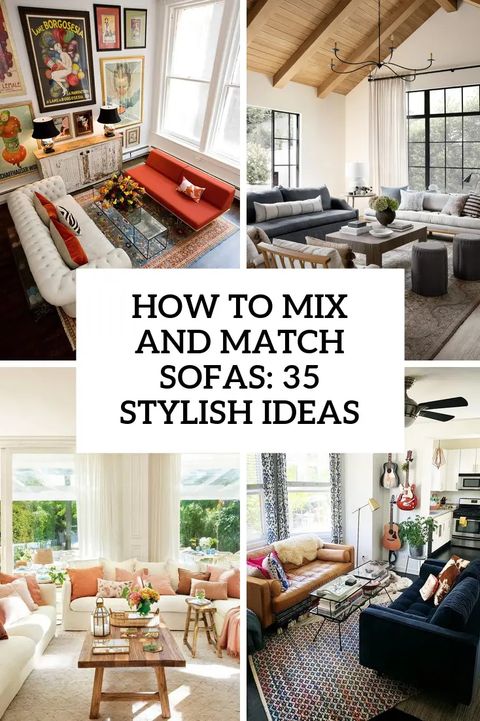Imagine walking into a living room where every piece tells a story, where comfort meets style, and where each chair and sofa seems to dance together in perfect harmony. That’s not just a dream – it’s an art that anyone can master with the right approach. Mixing and matching sofas and chairs isn’t about chaos or random choices. It’s about understanding the subtle language of design and speaking it fluently.
Furniture isn’t just about filling a space – it’s about creating a conversation. When you blend sofas and chairs thoughtfully, you’re crafting a visual narrative that reflects your personality and lifestyle. The challenge lies in making pieces that might seem completely different feel like they belong together. It’s like conducting an orchestra where each instrument has its own voice but contributes to a beautiful symphony. What if you could make your seating arrangements feel both eclectic and cohesive? That’s exactly what we’re going to explore today.
Understanding Visual Weight and Scale
Think of furniture as actors in a play. Some pieces are the lead roles – bold, commanding attention. Others are supporting characters – subtle but essential. Understanding visual weight helps you balance your room effectively. A large, overstuffed sofa might be the star of the show, while a sleek armchair could be the understudy that still makes a big impact.
Consider this: if you have a massive sectional, you’ll want to pair it with smaller pieces to avoid overwhelming the space. Conversely, a delicate, petite sofa needs some substantial companions to feel balanced. The key is to create a visual hierarchy that guides the eye naturally around the room.
Try this exercise: stand in the middle of your living room and look at all the pieces. Which ones draw your attention first? Which ones seem to recede into the background? This simple observation can reveal a lot about how your furniture interacts with each other and with the space itself.
Color Theory for Cohesive Mixing
Colors are the universal translators in design. They speak to our emotions and create connections between objects that might otherwise seem unrelated. When mixing sofas and chairs, you’re essentially creating a color palette that works together harmoniously.
The trick isn’t to match everything perfectly – that often looks too uniform and boring. Instead, find a common thread that ties everything together. This could be a shared undertone, a complementary color family, or even a single accent color that appears in multiple pieces.
Take a look at a room with a navy blue sofa paired with a burgundy armchair and a gold accent chair. The navy and burgundy share warm undertones, while the gold creates a bridge between them. The result feels intentional and stylish rather than haphazard.
Don’t forget about neutral tones – they’re your best friends when trying to blend different styles. White, beige, gray, and cream can make seemingly mismatched pieces feel like they belong together. These colors act as a canvas that allows other elements to shine while maintaining overall balance.
Texture and Material Blending
Texture adds life to any space. It’s one of the most powerful tools in your arsenal when it comes to creating interesting, engaging furniture combinations. You don’t have to match textures exactly – in fact, contrasting textures often create the most appealing results.
A velvet sofa paired with a linen armchair creates a wonderful tactile contrast. The softness of velvet against the crispness of linen offers both comfort and visual interest. Think about how these materials interact with light too – velvet tends to reflect light differently than wood or metal.
Here’s where it gets interesting: consider mixing natural materials with modern ones. A rattan chair next to a leather sofa can create a beautiful juxtaposition that feels both relaxed and sophisticated. The natural grain of wood can complement the smooth lines of contemporary furniture.
The key is to ensure that no single texture overwhelms the others. If you’ve got a very plush sofa, maybe choose simpler textures for your chairs to prevent the room from feeling too busy.
Style Fusion Techniques
Mixing different design styles can be incredibly rewarding when done thoughtfully. It’s like combining flavors in cooking – you want enough variety to keep things interesting, but not so much that it becomes chaotic.
Consider blending traditional and modern pieces. A classic Chesterfield sofa can work beautifully alongside a sleek, contemporary armchair. The traditional elements provide warmth and character, while the modern pieces bring clean lines and fresh energy to the space.
Another popular combination involves mixing vintage and current pieces. A mid-century modern chair can sit comfortably beside a contemporary sectional. The shared design principles – clean lines, good proportions – create a connection that makes the combination feel intentional rather than accidental.
The most important thing is to find a common thread that ties everything together. This could be a specific material, a similar color, or even a shared aesthetic principle. When in doubt, remember that less is often more. Start with one dominant style and add touches of another to create depth without confusion.
Practical Tips for Successful Mixing
Putting theory into practice requires a few key strategies:
• Start with a foundation piece – choose one sofa or chair that sets the tone for the entire room
• Build around that piece with complementary elements
• Pay attention to proportions – make sure nothing looks out of place
• Test the arrangement before committing to purchases
• Consider the function of each piece in relation to the others
Think about how people will actually use the space. Will they be sitting close together for conversations? Or do you need more individual seating areas?
A great example of successful mixing is a room with a large, comfortable sofa as the main gathering spot, paired with two different armchairs – one for reading, one for watching TV. Each piece serves a purpose while contributing to the overall design.
Common Mistakes to Avoid
Even experienced designers sometimes fall into these traps:
• Overcomplicating things – less can be more when mixing pieces
• Ignoring scale – a tiny chair next to a huge sofa looks jarring
• Forgetting about function – form should follow function
• Neglecting lighting – it affects how colors and textures appear
• Not stepping back to view the whole room
One of the biggest mistakes people make is trying to match everything perfectly. This creates a sterile, museum-like atmosphere that lacks personality. The beauty of mixing lies in the unexpected connections and the way different pieces complement each other.
Remember that your furniture should enhance your lifestyle, not dictate it. Choose pieces that you love and that serve your daily needs. When you’re happy with the combination, others will be too.
The art of mixing and matching sofas and chairs is really about creating a personal sanctuary that speaks to who you are. It’s not about following rigid rules – it’s about understanding the principles that make design work and then applying them with your own unique touch. When you blend pieces thoughtfully, you’re not just arranging furniture; you’re creating a space that feels lived-in, loved, and authentically yours.
The magic happens when you stop worrying about whether something looks ‘right’ and start focusing on whether it feels right for your life. Whether you’re working with a few carefully chosen pieces or a collection of treasures from different eras, the key is to listen to your instincts and trust your eye. The best furniture combinations are the ones that make you smile when you walk into the room. So go ahead, experiment with different combinations, and let your creativity guide you toward that perfect harmony.














